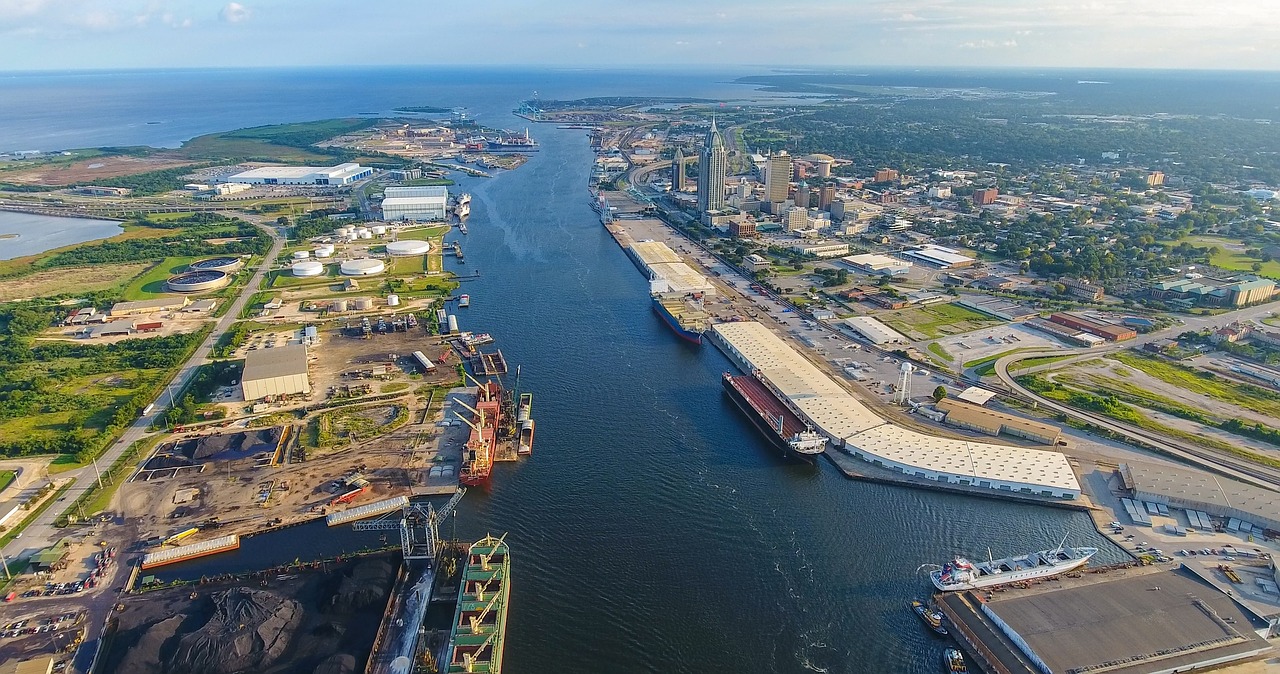When it comes to commercial UAV adoption, more and more people have begun to talk about the data as opposed to the drone, which underscores the importance of the data being gathered, regardless of how it’s captured. It’s a concept Airbus Aerial has literally taken to new heights, since they’re focused on integrating data via platforms that vary from satellites to drones and adapting it to help solve industry-specific problems. This approach allows the Aerial to provide customized data solutions.

Jesse Kallman, President of Airbus Aerial
As the President of Airbus Aerial, figuring out the best aerial data acquisition approach is something Jesse Kallman has helped a variety of organizations determine. It’s also a topic he’s set to explore in-depth during his upcoming
Commercial UAV Europe keynote,
The Future of Aerial Data: Leveraging Data from the Sky. Jesse will share Airbus’ vision for the emerging commercial drone market, how high atmospheric aircraft will change the game for data collection, and how to effectively approach integrating and utilizing data captured from a variety of aerial platforms.
To get a better sense of the specific info Jesse will be able to share with the audience, we caught up with him to ask about the impact of regulation on the drone market, how expectations around aerial data acquisition have changed, what it can mean for an organization to use drones to create efficiency and plenty more.
To register for Commercial UAV Europe,
click here. Jeremiah Karpowicz: Before we talk about what you’ll be discussing in your keynote, I wanted to ask about regulation, and how you’ve seen it impact the drone market. Specifically though, have you noticed similarities or differences in terms of the impact regulation has had on the drone market in America vs Europe?Jesse Kallman: Back in 2012-2013, Europe had some of the first commercial drone regulations, so a lot of these commercial discussions started in Europe well before they were coming to fruition in the United States. The French market saw some of the first beyond visual-line-of-sight approvals, and more complex commercial operations were taking place across the continent. The drone market in Europe was starting to advance that much further because they had that access to the sky.
When Part 107 came to the United States, we saw the conversation flip a little bit. The regulations in Europe have stagnated since they've gone from individual countries taking the lead in setting up regulations to waiting for an EU-wide set of rules. In America, people can take to the sky without a lot of hoops to jump through, so the momentum has shifted a bit.
Things have also started to globalize beyond Europe and the US though, and you're seeing things starting to pop up all over the world. You see major projects going on in Australia, Japan, and parts of India and Africa. It's becoming a common thing all over the world, which I think is the bigger shift.
How has that shift impacted the conversations you are or want to be able to have with professionals looking at acquiring and effectively using aerial data? As a large aerospace company, some people think we’ll just want to talk with them about a big military-style drone. But we're asking them what problem they're trying to solve, and people are beginning to understand is that while drones are very interesting and useful for certain things, they're not going to solve all of a company's problems.
Certain problems might best be addressed by a traditional manned aircraft data collection, especially when you're talking about a huge area. Satellites are in some cases much more economical and efficient in getting to the ultimate business problem. Drones are an interesting and new technology, but in many cases they do something similar to what other existing technologies have done, they just do it in a different way.
That said, I don’t want to downplay what we’re doing with drones, because we do a lot on the drone side of things. That’s part of what makes the conversations we’re having really exciting, because we've got experience flying everything from a DJI Phantom all the way up to large, gas powered fixed wing aircraft that can stay in the air for a really long time. We have access to an enormous amount of UAV technology, whether it's inside the company or not, and that's a refreshing change for people who tend to get a pitch from a drone manufacturer about their particular solution.
On the Commercial Drones FM podcast, you mentioned that anyone with a large asset base that needs to be inspected on a regular basis could benefit from Airbus Aerial services. Are those benefits more about creating efficiency as compared to current practices, or about allowing an organization to do something it previously could not? It's really both. We've seen use cases in the utility industry and with inspection that demonstrate these efficiencies.
Companies in the utility industry spend an enormous amount of money doing line patrolling with helicopters, manned aircraft or people. That's just the approach that's been taken for many years. Now though, they're starting to do some of that with drones. Granted, the efficiency to do it with a drone isn't there if you're trying to do a large area because of BVLOS regulatory restrictions, but they’re seeing some big benefits by tying what they’re doing with UAVs to satellite data.
Depending on what we're looking for, we might be able to image an entire city’s worth of power infrastructure via satellite, run some analysis and give them enough info to the point that they might not need to go out and fly all of those lines. They could perhaps hone in on a specific area where they need to inspect and use drones in a very targeted way. The fact they can use these different tools together makes a big difference.
Other industries are leveraging drones to do things they have never done before. One of the more interesting ones relates to doing inspections of aircrafts. Today, when Airbus or any airplane manufacturer assembles an aircraft, a series of inspections will be performed on the exterior. Similarly, when aircraft are in service and there's any sort of exterior maintenance concern or issue, a human being in a bucket truck with a camera manually inspects that aircraft. It can take quite a long time.
What's new is the introduction of an automated way for one person using a drone to image an entire aircraft in 15 minutes or less, and then be able to go through that imagery and really understand what's happening. It cuts inspection times down by an order of magnitude, and in most cases gives them a level of information that they didn't have before.
Today, that aircraft could land after experiencing something like a lighting strike, and while passengers are being offloaded, a quick drone inspection could be performed. That allows them to immediately understand what the impact is to make the necessary repairs. If everything checks out okay, they can get back up in the air without delay.
Your Commercial UAV Europe keynote is set to explore how drones are just part of a broader ecosystem of tools that will change the way the world leverages data from the sky. Are these ecosystems that exist now, or is it more about ones that will be created?A lot of these ecosystems do currently exist. The manned aircraft imaging industry is a huge industry, and it exists all over the world. Satellite imaging is something Airbus has been doing for over 30 years. It's nothing new.
The thing that's changing is the ability to access these sorts of tools in other industries that may not have had access to them in the past. The ability to use all of these tools and this data in tandem as needed is something that is very new, especially for organizations that deal with geospatial data. A lot of times these companies have a whole team of geospatial experts equipped with a wide range of tools to be able to manipulate and analyze this information. We’re working to simplify everything associated with that process.
We really do want to help people see that these assets not as complex and challenging as they might seem. We're trying to make all of it simple and easy to access, and that's the big difference. I don't think we're creating a brand new industry, I think we're creating an easier way to access several different industries that existed in the past as well as something new like UAVs. By making it incredibly easy to interface with and easier to get to the problem you're trying to solve, people are coming to understand how they can and should be leveraging all of this data.
 I imagine that’s a powerful realization for users who want to figure out what it means for them to use drones in these aerial data ecosystems, isn’t it?
I imagine that’s a powerful realization for users who want to figure out what it means for them to use drones in these aerial data ecosystems, isn’t it?I've been in the aerospace industry for a good bit of time now, some in drones, some in manned aviation, and it's a really interesting position to be in because you get to work with a lot of different technologies. The technology might seem complicated, but it’s absolutely possible to simplify it and take it down to the core principles in order to determine what is it that you really want and need to do.

 I imagine that’s a powerful realization for users who want to figure out what it means for them to use drones in these aerial data ecosystems, isn’t it?I've been in the aerospace industry for a good bit of time now, some in drones, some in manned aviation, and it's a really interesting position to be in because you get to work with a lot of different technologies. The technology might seem complicated, but it’s absolutely possible to simplify it and take it down to the core principles in order to determine what is it that you really want and need to do.
I imagine that’s a powerful realization for users who want to figure out what it means for them to use drones in these aerial data ecosystems, isn’t it?I've been in the aerospace industry for a good bit of time now, some in drones, some in manned aviation, and it's a really interesting position to be in because you get to work with a lot of different technologies. The technology might seem complicated, but it’s absolutely possible to simplify it and take it down to the core principles in order to determine what is it that you really want and need to do. 














Comments